How the King of Cheeses, Stilton Cheese, Powers Homes
The Stilton cheese is a blue cheese with a complex taste: creamy, salty and earthy. In just one bite, blue cheese lovers are in for a treat! What’s more, this cheese is surrounded by stories and mysteries. Did you know that it is now possible to produce energy from cheese? Also, blue cheeses are far from being all alike. Read on to learn more!
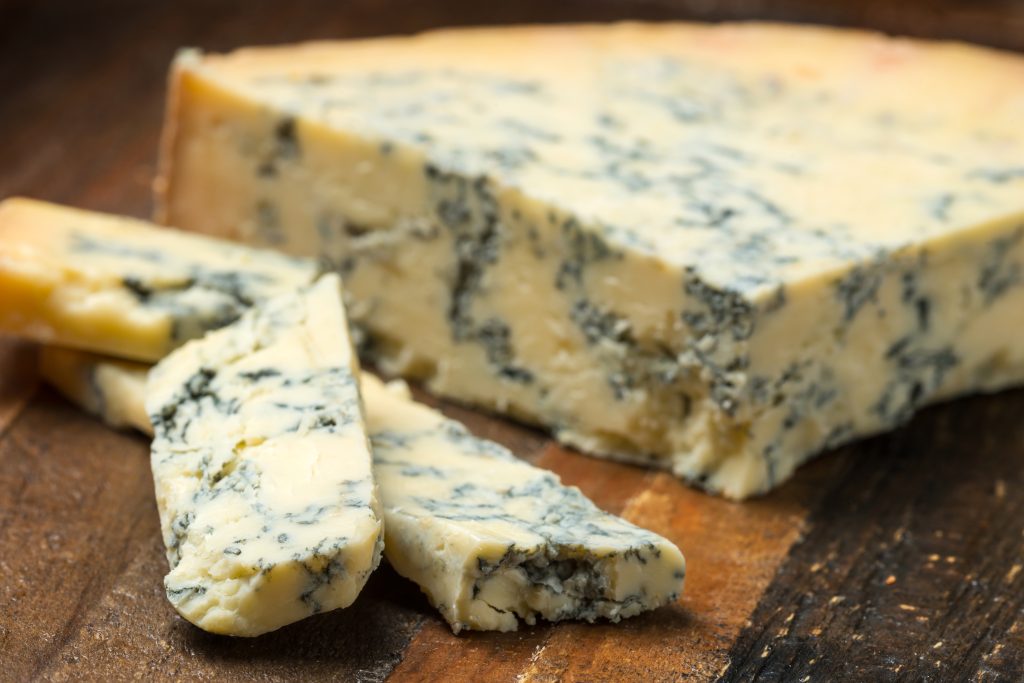
A few pieces of blue Stilton
What is Stilton cheese?
This blue cheese originated in the United kingdom (UK) and is produced in the counties of Derbyshire, Leicestershire and Nottinghamshire. It can only be called “Stilton” if it is produced in these three counties. Only six dairies are licensed to produce this cheese. Together, they produce approximately one million whole cheeses per year. In Canada, as in other countries, Blue Stilton must be imported. Even though some cheeses look like it, this name is protected. Since 1996, Blue Stilton has had European Protected Designation of Origin (PDO) status, a status that applies to foods, agricultural products and wines. The PDO requires that all stages of production of a product bearing their status must take place in a specific region.
The characteristics of this cheese
- The milk used must be pasteurized and come from a local cow.
- The shape must be cylindrical.
- The cheese texture must be soft and creamy.
- Fine blue fibers decorate the cheese.
- The flavour is rich with a sharp salty and nutty aftertaste.
Today, three cheese varieties exist: blue, white and vintage/mature blue.
The Blue Stilton
Blue Stilton has a firm, creamy, yellow-ivory texture. Bluish-green veins are found inside the cheese, created by a common edible fungi called, Penicillium roqueforti. During the ripening process, it is put into the cheese paste to help ripen the cheese and produce flavors. The ripening period is generally six to twelve weeks. The taste of this cheese is less aggressive and salty than other blue cheeses. The minimum milk fat is 48%.
The Mature Vintage Blue Stilton
Mature Vintage Blue Stilton has many of the same characteristics as its regular blue brother. One major difference is the maturation period. Mature Blue Stilton matures for ten to fifteen weeks and Vintage for more than fifteen weeks. The curds of both cheeses turn from off-white to yellow. As for the taste, it is softer and more mature than the regular Blue Stilton.
The White Stilton
Unlike Blue Stilton, White Stilton does not contain Penicillium roqueforti. This cheese is light, fresh and slightly acidic. Its color is white and the taste is very different from that of its blue descendant. It is often fruit-flavoured such as apricots, cranberries or lemon, and it is mostly used for dessert. The maturing period is about four weeks. The milk fat content is also around 48% minimum.

A creamy white Stilton with cranberries (Reganilou)
Stilton and Other Blue Cheeses
Despite their similar appearance, all blue cheeses are far from being the same. There are several factors that differentiate one blue cheese from another. For example, the level of moisture in the rind, the strain of blue mold used, the length of time the cheese has been aged before being ready, and whether the salt has had time to move from the outside to the inside of the cheese. Each blue cheese is unique.
Roquefort vs. Stilton
| Cheese Name | Country of Origin | Cheese Texture | Type of Milk |
|---|---|---|---|
| Roquefort | France | Semi-firm | Sheep |
| Stilton | UK | Firm | Cow |
The stories tell that Roquefort would come from a hookup between a shepherd and a shepherdess. The shepherd was busy seducing his lady and forgot his cheese in a cave. Over time, the cheese was transformed into Roquefort thanks to the influence of Penicillium roqueforti that was present in the cave. What could be more romantic? Its strong smell and taste attract blue cheese lovers. The texture is a fine and pronounced melt-in-the-mouth taste.
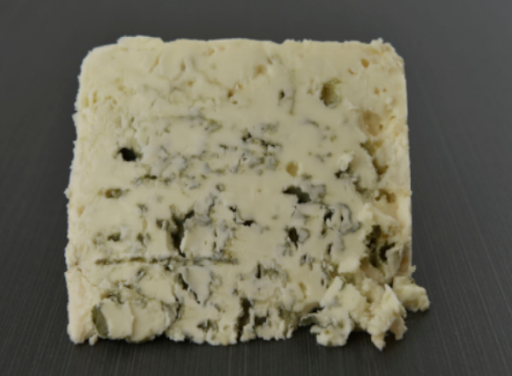
Roquefort Carles (Fromagerie Hamel)
Gorgonzola vs. Stilton
| Cheese Name | Country of Origin | Cheese Texture | Type of Milk |
|---|---|---|---|
| Gorgonzola | Italy | Soft | Cow |
| Stilton | UK | Firm | Cow |
Gorgonzola is made from pasteurized, non-skimmed cow’s milk. It is produced in two regions of Northern Italy: Lombardy and Piedmont. It is aged for about two months, during which time the cheese develop the required edible mold. If it is aged longer than two months, its taste will be similar to that of Roquefort cheese.
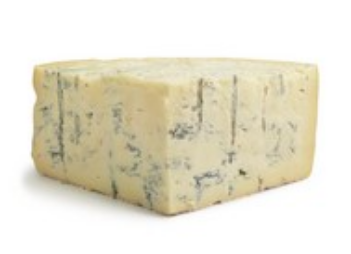
A piece of Gorgonzola to make many foodies salivate (Androuet)
Danablu vs. Stilton
| Cheese Name | Country of Origin | Cheese Texture | Type of Milk |
|---|---|---|---|
| Danablu | Denmark | Soft | Cow/Goat |
| Stilton | UK | Firm | Cow |
Danablu is a Danish blue cheese. Its taste is milder than the other blue cheeses, but still intense (salty and slightly bitter). The texture is both creamy and crumbly and its color is yellow.
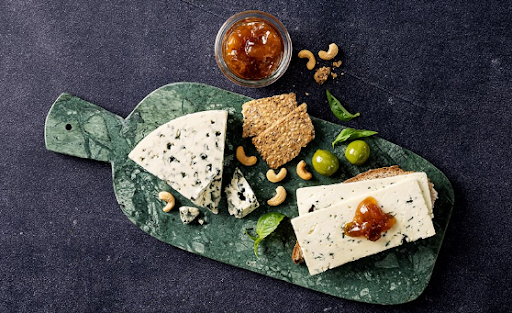
Danablu with olives, cashew, and marmelade (Castello)
The confusion behind the origins of Stilton
The creation of this blue cheese dates back to the early 18th century. Despite changes to the recipe over the years, Stilton is still a popular cheese. There is a mystery surrounding the origins of this cheese. The Stilton village is not in one of the counties (Derbyshire, Leicestershire and Nottinghamshire) where Stilton cheese can be produced, so how could they possibly have produced this cheese? Why is it called Stilton if it cannot be produced there?
Some say that it was created in the village of Stilton (Cambridgeshire) and others believe that while there has been cheese manufacturing in the village, this specific cheese was only sold at the Bell Inn, but never manufactured there. In the 18th century, the innkeeper of Bell Inn, Cooper Thornhill, contracted Frances Pawlett from Wymondham in Leicestershirestruck to produce the cheese. Over the years, Stilton gained the reputation for this cheese since the Bell Inn was a main hub for travellers and it was also sold in London under the same brand. Thus, the cheese took its name because it was sold there first.
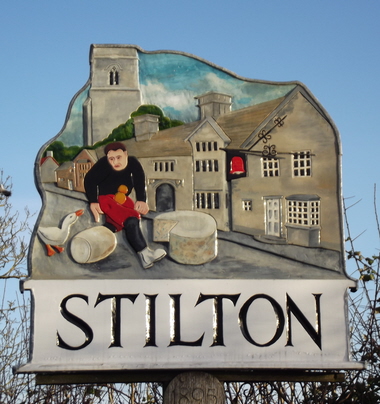
Sign of the village of Stilton in the county of Cambridgeshire (Travel Sign Posts)
Ideas for Serving Stilton Cheese
Stilton can be enjoyed in many ways. Whether it’s in a salad dressing, traditional “Welsh rabbit” (a toasted bread with hot melted cheese on top – no rabbit included), or put in a soup, on a pizza or in an avocado, the choices are endless! You can accompany it with a glass of full-bodied wine such as Shiraz, Amarone or a dessert wine to balance the salty taste of the cheese. Another option is to pour a few drops of honey on the cheese to add a touch of sugar! Alternatively, you can also add dried fruits and nuts. Traditionally, at Christmas, Stilton is served with port wine.
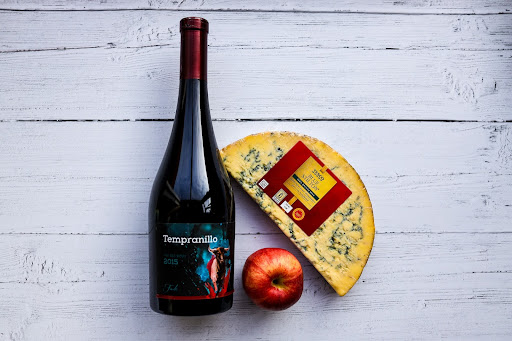
A bottle of wine, an apple and a blue Stilton (Cheese Professor)
If you want to serve a cheese platter to your guests, it is important to take the Stilton out of the fridge two hours in advance so that it can be served at room temperature. To make the most of the salty flavors, you can serve it with crackers or mango chutney.
Geronimo Stilton: The Mysterious Cheese Thief
The British “king of cheeses” has been mentioned in poems, essays and novels. The Mysterious Cheese Thief by Elisabetta Dami is one example. Geronimo Stilton is a mouse who is named after the famous blue cheese. In one of the books, the Stilton cheeses disappear one by one. Geronimo then embarks on a new adventure and investigates the disappearance of the cheeses. The Geronimo Stilton series of children’s novels has been translated from Italian into over 49 different languages. The first volume The Discovery of America was a great success and today more than 180 million copies of the Geronimo Stilton books have been sold. After Italian author Elisabetta Dami learned that she could not have children, she began writing the Geronimo Stilton books. Several years later, her dream came true: she became the mother of millions of children around the globe. This series continues to find a large audience among young people around the world.
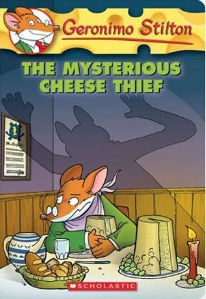
The Mysterious Cheese Thief by Elisabetta Dami (Good Reads)
The Production of Electricity with Cheese and Its Waste Reduction
The production of energy from cheese is a new initiative that could power thousands of homes around the world (i.e., Sweden, UK, France, Italy, Mexico and Canada). In general, cheese production generates three waste streams: cheese whey, a second type of whey only from specific cheese productions, and the third, wasted water. By using the waste generated by cheese production, we can not only reduce pollution, but also produce energy.
The main pollutant and by-product of cheese production is whey, a yellow liquid containing lactose. Once the curds are drained during the manufacturing process, the whey remains. Today, this liquid can be used to produce concentrated whey protein or whey extract. The unused whey will be sent to a local biogas plant where it will be used to generate thermal energy. In short, the whey will be transformed into biogas (gaseous fuel that is produced by the fermentation of organic matter). Over time, this resource will become more efficient, being clean and environmentally friendly.
Wensleydale Dairy is a major contributor to green energy production. During the production of more than 20 varieties of cheeses, it creates a large amount of waste. Then, the waste by-products will be turned into renewable biogas to cut carbon emission. Ingenious, isn’t it? Wensleydale Dairy alone can power nearly 800 homes per year. If you want to do more to help the planet, don’t hesitate to compost or heat your home in a more ecological way!
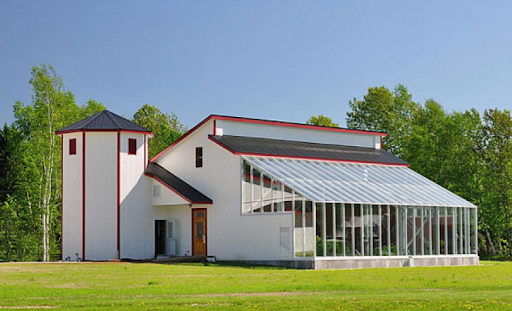
Charlevoix cheese maker reduces waste and energy consumption
Charlevoix cheese maker was a leader in 2006 when it decided to treat its process water with a biomethanation plant and an Eco-Machine water purification system. 100% of the biogas produced on site is burned to maintain the temperature for the production process and heating purposes. Also, 100% of the organic liquid matter in the process is decomposed. If you want to do more to help the planet, don’t hesitate to compost or heat your home in a more ecological way!
Stilton is an amazing blue cheese! There are so many ways to enjoy it and share it with your guests. If you’re curious to try this cheese, use the Dessert Advisor search tool to find Stilton cheese near you. Have a bite of a good blue chunk!




